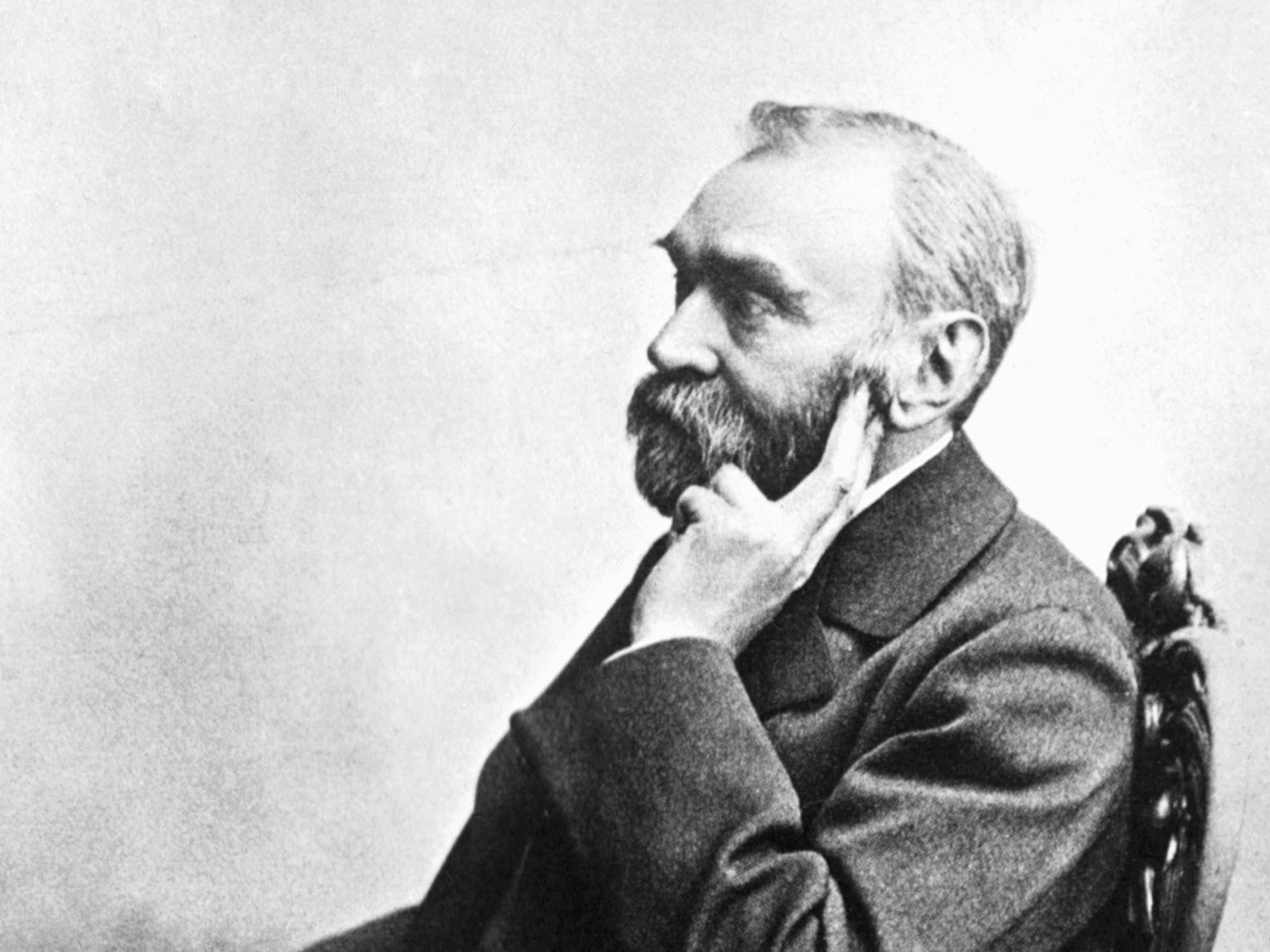
These Simple Laws Explain How the World Works
Bubbles, toasters, and the internet—most aspects of everyday life are influenced by physics.
Shackleton, Scott, and Amundsen faced many hardships on their treks to the South Pole, from frostbite to snow blindness. Few biographies, though, mention that much of their misery was caused by the ideal gas law, which governs the relationship between the pressure, volume, and temperature of a gas. It is this crucial law of physics, explains British physicist Helen Czerski in her new book Storm in a Teacup: The Physics of Everyday Life, that generates the fearsome katabatic winds, which rake the surface of Antarctica at almost 200 miles an hour.

This is just one example of how the science of physics informs every aspect of life, says Czerski. When National Geographic caught up with her by phone from London, she elaborated further—on the importance of bubbles (her specialty), the physics lessons taught by your toaster, and why it doesn't help to bang the bottom of the bottle if no ketchup comes out.
You are the first expert on bubbles that I have ever interviewed. Tell us how you got into this arcane field—and why it frequently involves voyages on ships in stormy seas.
[Laughs] Bubbles are the unsung heroes of the physical world. They’re everywhere, doing very useful things. No one pays attention to them, but they’re important because a bubble, which is made up of a liquid and a gas, can do things that the liquid and the gas, each individually, can’t do.
Imagine the froth on top of your cappuccino. If you put a spoon on top of that, the foam will support the spoon. But if you put that spoon on top of just gas, or just liquid, it would fall straight through. Mix the liquid and gas together and suddenly they can do something entirely new.
I got into the field of bubble physics because my Ph.D. was in experimental physics. I’m an experimentalist. I build things, and I was building experiments to use high-speed photography to look at events that were so small and so fast that they could be happening right in front of your eyes and you couldn’t see them. I was fascinated by the world that was right here but just beyond what you’re able to see.
Bubbles breaking apart and joining together also happens extremely quickly—and it’s extremely small—so you need those special techniques to see what’s happening. Now I study the bubbles underneath breaking waves, where lots of bubbles are breaking up in that washing machine kind of turbulence. When the bubbles go back down into the ocean they’re important for helping our oceans breathe. They’re like little packets of gas carried down into the water.
I go out on ships to measure bubbles, usually in storm season, in the Mid-Atlantic. You look out over the deck at that familiar sight of breaking waves, something seafarers have seen for centuries, but just a meter below the surface you can see something that they have never been able to see. We need to understand it because it’s part of the clockwork of our planet, one of the mechanisms making our planet run.
Some people might think of physicists as nerdy figures in lab coats remote from normal life. But your book shows us that in our everyday life we are all physicists. Give us some examples.
That’s a fantastically outdated vision of a physicist! [Laughs] Physics is all about the rules that make the world work, and we all use them every day whether we’re aware of it or not. We don’t necessarily use them systematically but we’re familiar with the way things work.
When you’re baking bread, for example, one of the main things you want is to have bubbles in your dough. You use various methods to put bubbles into bread. You can use a raising agent or yeast, or you can fold air into the bread. When you put that in a hot oven and heat the gas up, the molecules inside the bubbles will bounce off the walls like tiny bumper cars and push them outwards, which makes the bread expand and rise. That comes from something called the Ideal Gas Law: the idea that the pressure, temperature, and volume of a pocket of gas are related to each other. Once you’ve got that little bit of physics, you’ve got the internal combustion engine, winds from Antarctica, and popcorn.
One of life’s small hassles is getting ketchup out of the bottle. What does physics tell us about it—and why doesn’t banging the bottom of the bottle help?
It’s a great disappointment to me that ketchup bottles are now made out of plastic rather than glass because now you can squeeze them and you don’t get to appreciate this nice bit of physics. We’ve all been in a pub or a diner, where you have a glass bottle of ketchup. You turn it upside-down, shake it, hit the bottom, and the ketchup doesn’t come out. Then it all comes out at once! [Laughs]
That’s not random. It happens because ketchup has got this weird property known as shear thinning. What that means is, it’s really viscous until you force it to move a little bit. When you’re shaking the bottle, the ketchup can’t go anywhere, so it stays thick. Once you hit it hard enough that it has to go somewhere, then it becomes runny, so a whole load of ketchup comes out at once.
The trick is to hold the bottle at a slight angle and tap the neck of the bottle, because then you’re making it runny where you need it to be runny. Everything further up the bottle stays nice and thick. Instead of having ketchup splodge everywhere, you can control the amount that comes out.

You’re British so tea and toast play an inordinate role in your life. There’s lots of physics in them, isn’t there?
The best thing about physics for me is that the same pattern explains lots of different things. There’s no reason why you have to see that pattern in a posh lab wearing a lab coat with some expensive bit of kit. You can see those patterns in your cup of tea. When you stir milk into your tea, the white milk doesn’t just merge with the dark tea. It swirls around. Then we look up into the sky at the big, rotating storms that come past at our latitudes, and there are also two fluids mixing together, via swirling. Even though looking at your teacup is one of the most mundane things in daily life, what you see there applies in other places.
It’s the same with toast. You shouldn’t worry about the universe until you understand your toaster because there’s a lot of fundamental physics in your toaster. [Laughs] One is, they glow. It sounds obvious. It’s hot so it glows, right? But that dull red glow that gets brighter and brighter as it gets hotter comes from one of the most fundamental laws of physics. That law says that anything that has a temperature above absolute zero is glowing. The type of light it gives out depends on how hot it is. So, the hotter it gets, the shorter the wavelengths.
The other interesting thing in a toaster is an electromagnet. When you push the lever down on the side of the toaster and the toast stays down inside the toaster, the thing holding it down is an electromagnet. The lever connects up a little circuit and sends a current round in a spin. And when a current is going round in circles, the laws of physics say that it will generate a magnetic field. When the toast is done, the current is switched off, the magnetic field goes away, and your toast pops up. You’ve got two of the most essential foundations of physics. And they are both in your toaster!
You say, “The fabric of our civilization is woven together with electromagnetic threads.” Why is electromagnetism so important?
Each of us has three life support systems: We have a body, a planet, and a civilization. Our civilization is keeping us alive now in just the same way that the other two do. We are absolutely dependent on it. And the thing that connects our civilization together is electromagnetism.
There are two forms: visible light—signals we can see from a long way away—which has connected humans for a long time. And now there are the signals we can’t see: radio signals, Wi-Fi signals, mobile phone signals. They’re making a web of electromagnetic waves that we walk through. We don’t see them directly but we use radios, TV, and the Internet, which all depend on them.
One hundred years ago that didn’t exist! Earth was dark in the radio wave and microwave wavelengths. Today, we’ve lit it up with this web of light. Light that we can’t see! But that is communicating! The fabric of our civilization is now stitched together with that communication. If you want to buy something, need medical help, or want to learn something today, you are absolutely reliant on signals being sent to you by electromagnetic waves. We take this web of communication for granted. But we should really appreciate it as a luxury.
In both the U.K. and the U.S., there is a steady decline of high school students opting for physics, particularly among girls. What can be done to make the subject more attractive?
When people hear the word physics, they think quantum weirdness or cosmology, something extremely tiny or very big. What we’re not talking about is all the stuff in the middle. The equations for Newton’s Laws of Motion can be written down quite easily. But those simple laws can help us understand the way our human systems and bodies work, and you can see their effects in the real world. That is a very important reason to study physics.
Physics has this image of being terribly po-faced: a guy with a beard working late at night in a dark room. There’s nothing human in that view of physics. But physics is about making things happen, and we’re not doing well enough at conveying the message that once you understand the framework of the world, you have a different perspective. Even if you’re not going to become a physicist, that is a useful thing for a citizen to have.
Physics is also about how things work. During your lifetime you’re going to be sold toasters or washing machines or cars, and you need to know which questions to ask. Physics is about giving you the basic map of the world.
This interview was edited for length and clarity.
Simon Worrall curates Book Talk. Follow him on Twitter or at simonworrallauthor.com.








